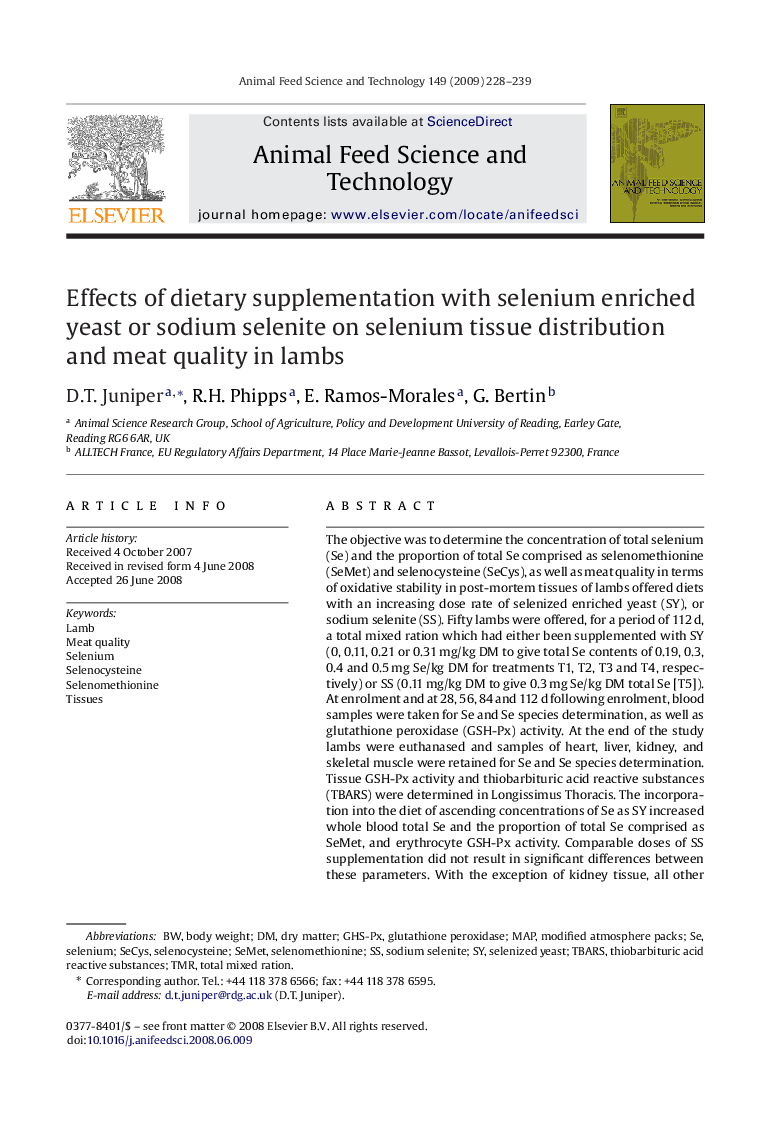| Article ID | Journal | Published Year | Pages | File Type |
|---|---|---|---|---|
| 2420479 | Animal Feed Science and Technology | 2009 | 12 Pages |
The objective was to determine the concentration of total selenium (Se) and the proportion of total Se comprised as selenomethionine (SeMet) and selenocysteine (SeCys), as well as meat quality in terms of oxidative stability in post-mortem tissues of lambs offered diets with an increasing dose rate of selenized enriched yeast (SY), or sodium selenite (SS). Fifty lambs were offered, for a period of 112 d, a total mixed ration which had either been supplemented with SY (0, 0.11, 0.21 or 0.31 mg/kg DM to give total Se contents of 0.19, 0.3, 0.4 and 0.5 mg Se/kg DM for treatments T1, T2, T3 and T4, respectively) or SS (0.11 mg/kg DM to give 0.3 mg Se/kg DM total Se [T5]). At enrolment and at 28, 56, 84 and 112 d following enrolment, blood samples were taken for Se and Se species determination, as well as glutathione peroxidase (GSH-Px) activity. At the end of the study lambs were euthanased and samples of heart, liver, kidney, and skeletal muscle were retained for Se and Se species determination. Tissue GSH-Px activity and thiobarbituric acid reactive substances (TBARS) were determined in Longissimus Thoracis. The incorporation into the diet of ascending concentrations of Se as SY increased whole blood total Se and the proportion of total Se comprised as SeMet, and erythrocyte GSH-Px activity. Comparable doses of SS supplementation did not result in significant differences between these parameters. With the exception of kidney tissue, all other tissues showed a dose dependant response to increasing concentrations of dietary SY, such that total Se and SeMet increased. Selenium content of Psoas Major was higher in animals fed SY when compared to a similar dose of SS, indicating improvements in Se availability and retention. There were no significant treatment effects on meat quality assessments GHS-Px and TBARS, reflecting the lack of difference in the proportion of total Se that was comprised as SeCys. However, oxidative stability improved marginally with ascending tissue Se content, providing an indication of a linear dose response whereby TBARS improved with ascending SY inclusion.
